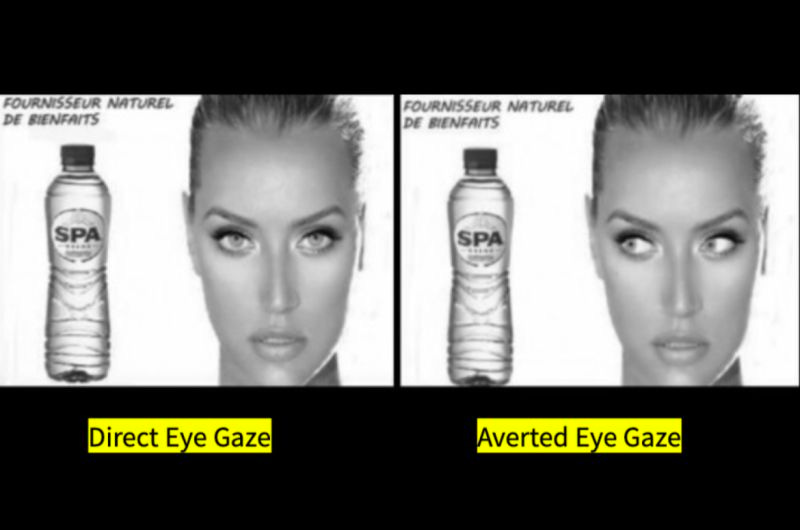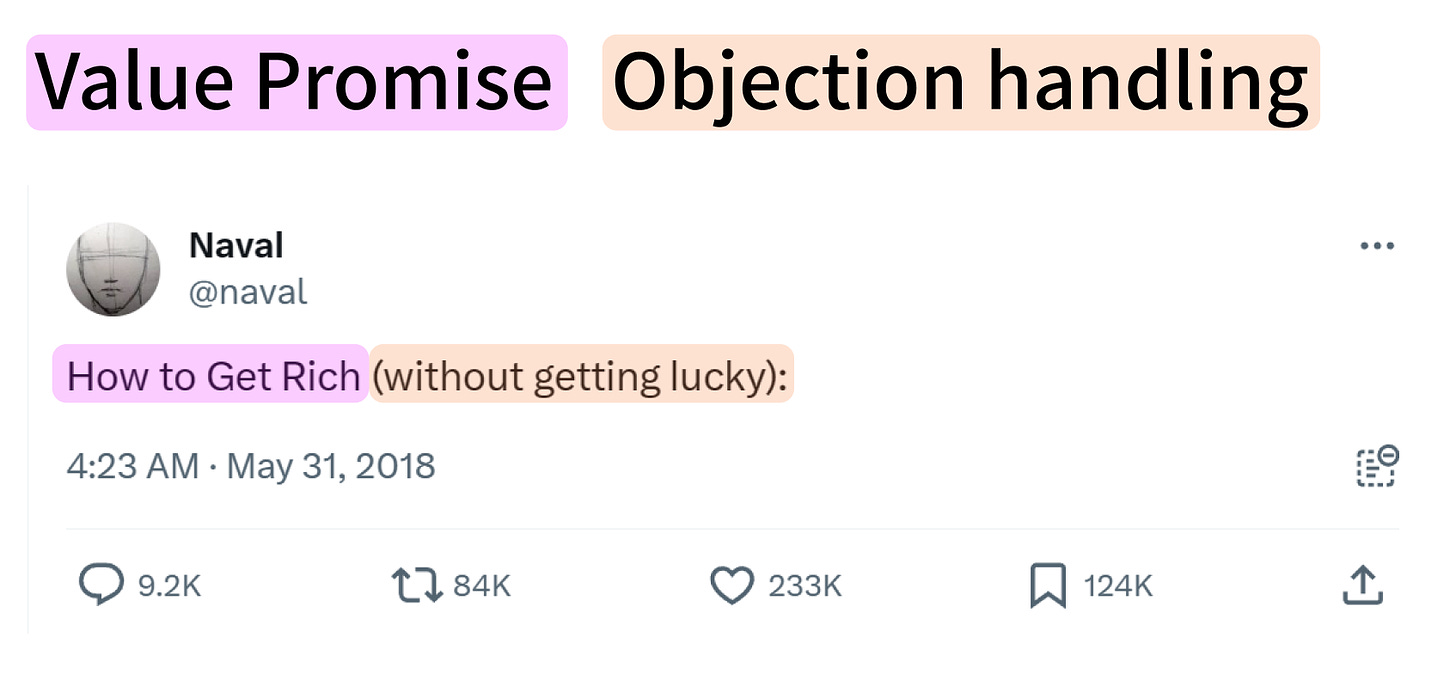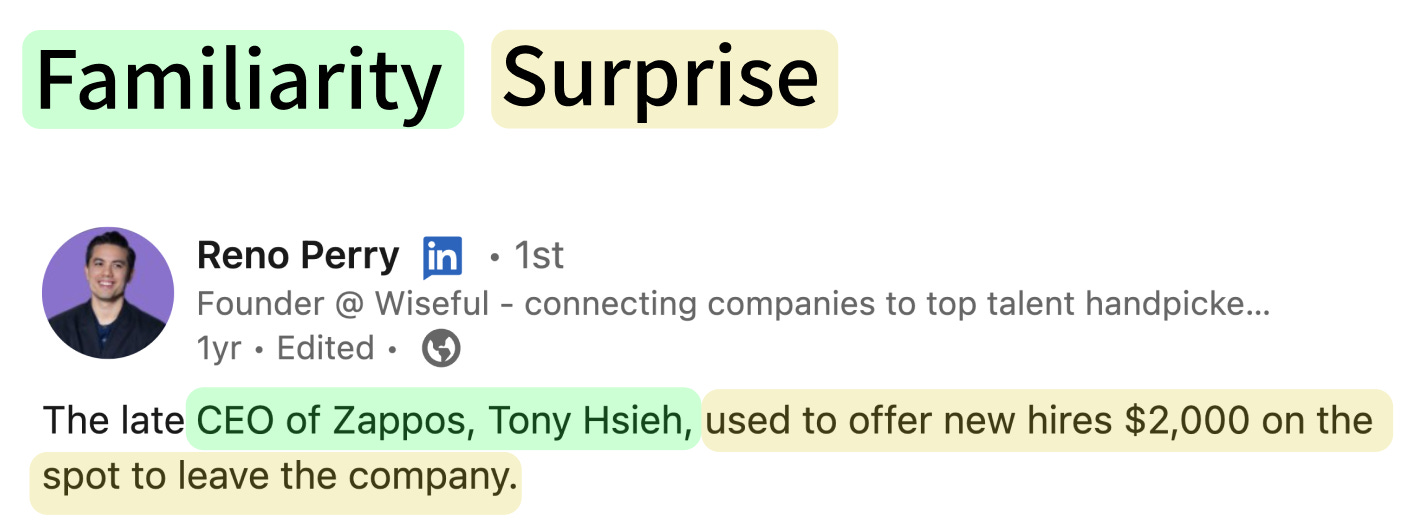10 Ways to Write Hooks (with examples)
An in-depth guide from analyzing 1000s of viral posts.
I write a newsletter for 102,000 startup founders and have 65,000 LinkedIn followers.
Combined, my content has been read tens of millions of times.
This post is everything I know about how to write hooks.
What is a hook?
A hook is the opener of anything you want people to pay attention to.
Whether it’s a:
Social post
YouTube video
Fundraising pitch
Cold email/DM
Presentation
Or even a quirky travel story.
People are gone if you don’t intrigue them within a few seconds.
They continue scrolling.
They mentally check out.
Or they mark you as spam.
A hook is the first:
1-3 sentences
The title slide of a presentation
The first view seconds of a video
Hooks have the power to make or break any piece of content.
A “meh” piece of content with a WOW hook has a better chance than a WOW piece of content with a “meh” hook.
This is true whether the post is short-form or long-form. Why invest in a 20-minute article if it fails to grip you in the intro?
I bet you could rewrite the hooks on all your posts and get upwards of 10x the engagement the second time.
This post will teach you how to write thumb-stopping hooks.
10 fundamental ways to write a hook
I write a newsletter for 102,000 startup founders and have 65,000 followers on LinkedIn.
Naturally, I wanted to reverse engineer what made posts go viral. I started going through the top posts with 10s and 100s of thousands of likes, and certain patterns emerged.
Here’s what I discovered after a lot of hours and coffee:
Note: You may have seen me previously say there were 12, but I’ve revised it to just 10 as the other 2 were subsets of the others.
Let’s go into each of these now with a ton of examples.
1. How to write a hook with Credibility
Telling people WHY they should listen to YOU for this topic.
This isn’t bragging. It’s contextualizing why they should take your advice seriously.
Credibility hook examples
You can write a credibility hook in three different ways:
Your experience and accomplishments
Your effort
Someone else’s credibility
Your experience and accomplishments.
Why should I listen to you?
“I have an MBA.”
“I was ranked CEO of the year.”
“I run two 7-figure startups.”
It feels like bragging, but you should be fine if you do it with humility and without standing in front of a Lamborghini.
Your effort.
Is this information worth anything?
“Oh damn, Naim spent 16 hours on this?”
This is a result of the Labor Illusion:
“A psychological phenomenon where people perceive a service to be more valuable when they can see the effort being put into it, even if it doesn't necessarily result in a better outcome.“
Speaking of which
Someone else’s credibility.
If you lack credibility, you can leverage the credibility and familiarity of a well-known and respected person or company.
This is why people do a lot of Apple and Steve Jobs posts:
Credibility Hook Ideas
“Last year my business did $10m in revenue…”
“I’ve run two marathons…”
“I spent X hours…” or “I analyzed 1000s of posts” or “I read 1000 emails…”
“MrBeast videos have 49,273,123,390 views.”
“I lost over $100,000 on these failures:”
2. How to write a hook with Fear
There’s a famous newspaper adage:
“If it bleeds, it reads.”
Fear and negativity works because:
Loss Aversion: We’re more likely to take action to avoid losses than seek gains.
Negativity Bias: People are more influenced by negative events, feedback, or terminology than positive ones.
Fear hook examples
Fear can manifest in various ways:
FOMO – Fear of Missing Out
FOBO – Fear of Being Outdone
“I hope I’m not doing it wrong.”
“I hope that doesn’t happen to me.”
FOMO – Fear of Missing Out
“I don’t want to miss out or be left behind.”
It is super popular with AI fearmongering.
FOBO – Fear of Being Outdone
This blurs the line of credibility and FOBO. The fact that she’s making a 1% salary without employees triggers anyone’s FOBO:
And Justin’s ridiculous schedule is enough to make anyone feel outdone.
“I hope I’m not doing it wrong.”
This benefits from the strong language of “suck at.”
“I hope that doesn’t happen to me.”
3. How to write a hook with Curiosity
When you're curious about something, your brain rewards you with a major dopamine hit when you satisfy that curiosity. So when it’s pique, your brain becomes a junkie looking for a sweet dopamine fix.
Curiosity hook examples
Frame things in such a way that makes you say:
“Then what happened?”
“I have to know more”
“Hmm, what is it?”
“What is going on?”
“…?”
“Then what happened?”
Tease a fun and interesting story.
Andrew uses fun, colorful language to paint an intriguing picture:
“I have to know more”
First, the “hot take” gets you a bit since we like spiciness.
Second, Shaan is saying that we’re all wrong about the Metaverse. What are we wrong about? Is he pro-Metaverse or anti-Metaverse?
“Hmm, what is it?”
Here, I share an image and tease at something. You’re forced to keep reading to figure out what I’m pointing out.
“What is going on?”
Casey Neistat’s “Do What You Can’t” video became a rallying cry for internet creators.
But it didn’t start with him. And it didn't start with any dialogue.
Instead, it started with a man hanging from a helicopter on a ladder (and a cryptic title).
“…?”
This was a popular hook for a bit:
It’s the start of a sentence normally followed by something interesting or spicy.
Curiosity hook ideas
Shocking truth: “I used to sell drugs.”
Strong words: “Everyone is wrong about…”
Open a loop: “I don’t know who needs to hear this…” or “
Tease: “Look closely at most successful creators, and you’ll notice something:”
Start a story: “This is a story about how I lost $10,000,000…”
4. How to write a Counter-Narrative hook
Strong opinions and bold claims provoke dialogue and thought. Particularly if they contradict things we already believe to be true.
Counter-Narrative hook examples
For example, everyone always says our attention spans are shrinking:
By countering the common narrative, he grabs our attention and gets us to keep reading. Just like Justin and Katelyn do here:
You don’t expect a guy making 7-figures and a gal with 100k+ followers to shit on money making and audience building.
Spiky points of view
Those examples are what Wes Kao calls “spiky points of view.”
5. How to write a hook with Eloquence
Eloquently putting a voice to an unvoiced concern, frustration, or opinion.
The magic is in finding and tapping into those unvoiced thoughts. And then summarize it succinctly and powerfully.
Eloquence hook examples
You want people to say:
“Finally, someone said it!”
“That’s so damn true.”
“Finally, someone said it.”
Many of the comments on the following post were people saying: “Yes, finally, somebody said this thing that I've been thinking.”
Chris hit an emotional nerve.
People are tired of companies virtue signaling rather than fixing fundamental problems.
“That’s so damn true”
Here, Andrew tapped into a feeling that every entrepreneur has had:
These are hard
You need to tap into unvoiced concerns and do sharp copywriting.
Tying it to a trending topic or news story is even better.
6. How to write a hook with Faces
This isn’t about writing. It’s about visuals. Specifically faces.
We're hardwired to notice and like faces—especially when they’re displaying strong emotions (or they’re attractive).
We even naturally mimic the emotions we see in them through mirroring. That allows us to understand those emotions and empathize better.
Faces hook examples
Here are five ways to use facial expressions in your hook:
Show your shock
Share a selfie
Non-tasteful versions
Boost credibility
Help people know where to look
Show your shock
Open mouth, a shocked expression: This is a classic on YouTube.
A shocked face gets your attention. You wanna know what caused it.
Share a selfie
It's been a trend on LinkedIn to share a photo of yourself, often combined with a semi-emotional post. Codie Sanchez did a tasteful version of that:
We’ll naturally wonder why there are two photos side by side. We want to spot the differences and discover what connects them.
Non-tasteful versions
Note that I called Codie's selfie “tasteful.” That's because it's relevant to the post.
When a selfie lacks context, it's less likely to be all that appealing, or be seen as attention-seeking.
Example: the viral post when a CEO announced that he'd laid off staff and shared a photo of himself crying:
Boost credibility
Faces can be combined with Credibility, the first hook type we discussed. If you reference someone famous, use a photo of them:
Help people know where to look
Studies show that ads using an averted gaze draw more attention toward the product than ads with a direct gaze:
We’re drawn to look at whatever someone else is looking at.
7. How to write a hook promising Value
Not every hook needs to blow people’s minds. Sometimes, it just needs to promise some educational value so people know they can expect something useful.
Value hook examples
This opener is simple:
It tells you exactly what you’re gonna get by reading.
If you’re currently building a startup and thinking about brand strategy, or if you’re a marketer who wants to hear Amanda's take, you’ll stop and go, “Hmm I should read this.”
Or here’s the first slide of a LinkedIn carousel I posted:
Yes, I leverage the Credibility/Familiarity of LinkedIn, and use the Faces of credible/familiar people, but the hook is just promising exactly what they will get.
Handle Objections
A popular addition to this is to handle an obvious objection they may have:
Naval
Harsh Makadia
Ben Meer
People are naturally skeptical. Handle their objections upfront.
Just make sure that the value you promise is the value you deliver—otherwise, you create clickbait.
8. How to write a hook with Surprise
People love surprising, amazing facts. People also love to share surprising facts due to “Social Currency.” People’s perception of you changes based on the novelty of the information you share.
You want people to go, “I didn't know that.” Or, “That's wild!”
Since you’re trying to hook readers quickly, you can’t share a surprising *story*.
You need to surprise them in a sentence or two. Do that with statistics:
Surprise hook examples
Codie Sanchez
Reno Perry
Justin Welsh
People love to be surprised and say, “I didn’t know that!”
Importantly, they also love sharing surprising discoveries—which can mean a high share rate on this post type.
All 3 of the examples above could be shared just for the stats themselves. “Wow! Did you know that 75m baby boomers are retiring soon?”
9. How to write a hook with Celebration
People love to celebrate wins. You want them to go, “I'm so happy for you/them/us.”
A couple of benefits of celebratory posts:
People feel compelled to show their support, meaning a higher engagement rate.
There’s a clear comment to make: “Congratulations!” Other post types can require some thought when writing a comment. This one's easy.
Celebration hooks can be about many things, but some common ones are:
Celebration hook examples
Here are 3 obvious times to do a celebration hook:
New jobs
Miletones
Birthdays
New jobs
They don't even have to provide additional value, like we've talked about with other hook types (Education, Eloquence, etc.).
Again, people feel compelled to say congratulations, particularly if they know the person personally or professionally.
Milestones
Here, Lenny shares a major newsletter milestone (note this is also Credibility ;0)
It warrants a, “Congrats, Lenny! That’s huge!”
Other milestones might include follower count, revenue, fundraising, and awards
Note: Lenny’s post also leverages Credibility (wow, he’s got 250k subs!) and FOBO: Fear of Being Outdone. Just like this one:
Birthdays
Jay's post has Credibility and triggers FOBO (damn, I’m 33, and I haven’t done any of those things…). So you post a “happy birthday” comment and keep reading.
10. How to write a hook with Identity
With this one, you want people to stop and say, “Hey, that's me!”
You're signaling who your post is for so those people know it’s relevant to them.
Identity hook examples
You can do that in two ways:
Use a Barnum-style statement/question
Label them directly
Use a Barnum-style statement/question
A statement that appears to be specific and tailored to an individual, but is actually vague and general enough to apply to a wide range of people.
This is essentially how horoscopes work. They dance between specific and vague—and occasionally really nail how you feel that day.
Question

Statement
Label them directly
Or you can call out a group of people directly by name like Julian did for “movie nerds”:
Even better: Lump yourself into that community so they feel more connected to you (”my fellow movie nerds”).
Better yet, use terminology that they use to describe themselves. For example, address Lady Gaga fans by their preferred moniker: “Little Monsters.”
Hook examples and ideas
These are the 10 fundamental ways to hook, but as you have likely figured out by now, a single post generally leverages multiple hook types. This is particularly true when the post contains text and an image/video.
But you’ll need to master copywriting.
These are the 10 ways, but you must be a sharp copywriter for them to work.
Here are a few resources I’ve created to help:
The Hook Vault. I used Readwise's list of top Twitter thread creators and analyzed the top 4 hooks from the top 100 creators.
The 10 types of posts and how to use them. Use these to systematize your content creation process.
10 Copywriting Tips. One of my top articles and LinkedIn posts.
7 Copywriting Frameworks (with cheatsheet). So you don’t have to start from scratch; these frameworks make “fill in the blanks.”
Breakdown of the top 30 hooks on LinkedIn. Each hook is color-coded to show the smart thing each creator did to hook you.
Breakdown of the top 26 hooks on Twitter.
An analysis of the top 20 female creator's hook. Due to the total lack of gender diversity of the top 100 creators, I created one for the top 20 women.
An analysis of 12 ways to hook with Thumbnails. A hook can be an image, too.
Cheers folks!
If you like this post, share it with a friend that’s trying to grow on LinkedIn or X!
How I can help you grow:
Growing a personal audience? Join the waitlist for the next Un-ignorable cohort.
Need to run ads? We’ve built the ads agency for startups.
Need to hire an agency/freelancer? We’ll match you with a vetted partner for $0.
Need advice on growing your startup? Book a consultation call with me.
Sign up for my premium newsletter to access my post archive.
😍
– Neal


















































Great read! Thanks for sharing!
Excellent post. I subscribed, shared, recommended, and will take your advice!